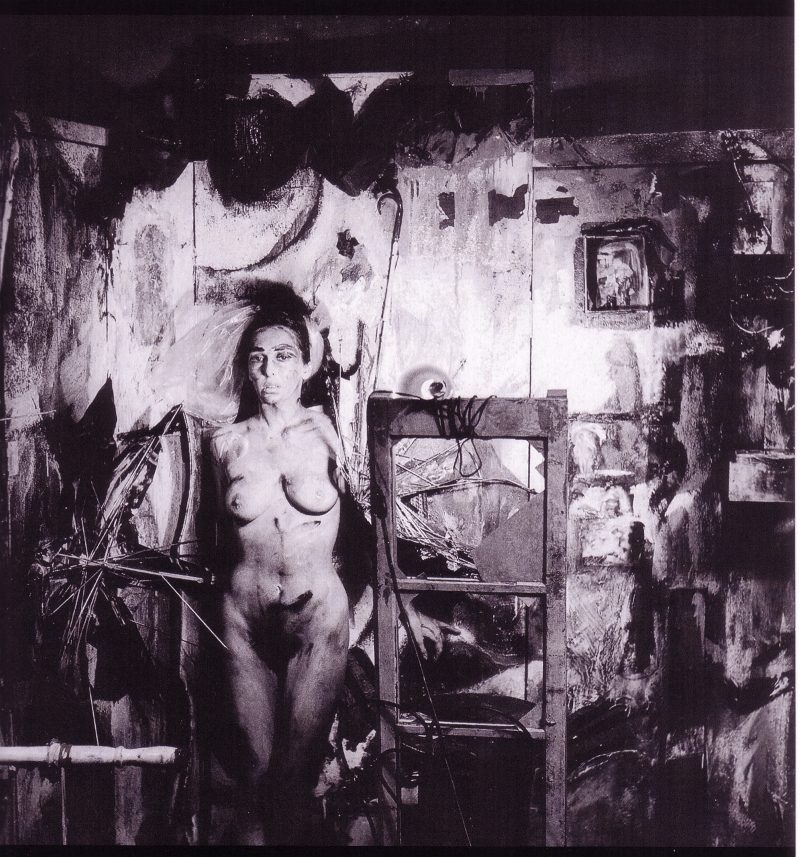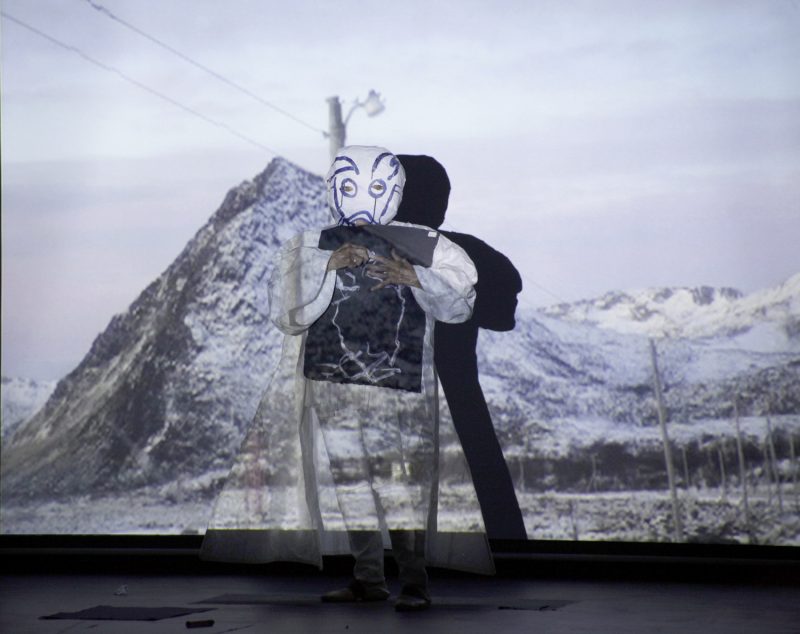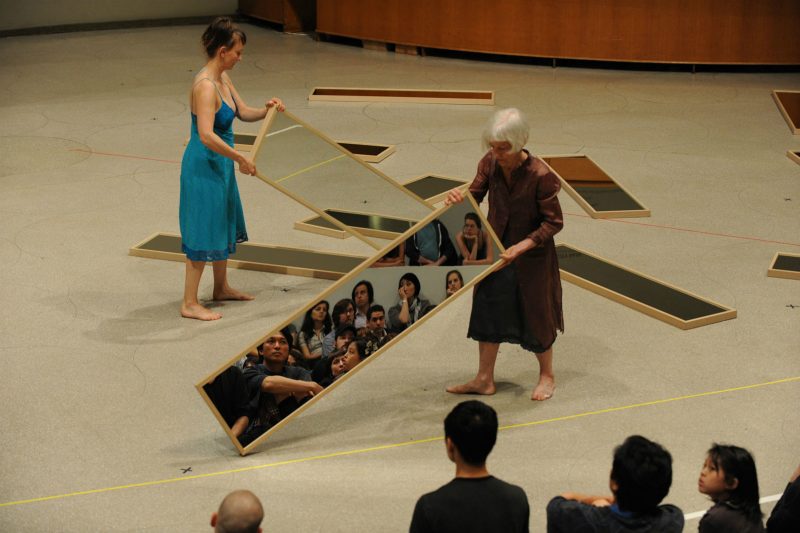Carolee Schneemann: Kinetic Painting, edited by Sabine Breitwieser (Salzburg: Museum der Moderne and Munich: Prestel, 2015) ISBN 978-3-7913-5507-5 (English edition)
Click here to see the book on Amazon.

This long-awaited volume, published as an exhibition catalog, surveys the still-evolving career of Carolee Schneemann, whose work until now has been best represented by collections of the artist’s own published writing (More Than Meatjoy, edited by Bruce McPherson [1997] and Carolee Schneemann, Imaging Her Erotics; Essays, Interviews, Projects [2002]) and correspondence (Correspondence Course: An Epistolary History of Carolee Schneemann and Her Circle, edited by Kristine Stiles [2010] and reviewed on Artblog April 22, 2012).

Breitwieser conceived the exhibition and monograph as a product of Schneemann’s training as a painter and the artist’s own understanding that all of her works on film, performances, writings and installations derive from her painter’s viewpoint. While this may be hard for some readers to accept, it is useful to remember that much of her work had no precedent as to métier when it was made, so why not painting?
Schneemann is renowned for a handful of her performances (particularly “Meat Joy” and “Interior Scroll”), some of which were recorded on film. She is also highly respected by scholars of experimental film. She has incorporated videos of performances into later installations, re-situating the original ideas within the context of a later date and broader ideas rather than re-creating a performance that was inevitably a response to an earlier period and different situation. Critics and historians have had problems situating her work, which was truly multi-media before that term was theorized and long before it became a subject of specialty in art schools.

This sumptuous volume should call attention to the breadth and multi-media format of much of Schneemann’s work, and to the sweep of her subject matter. Her subjects range from war, death, subject/object relations, animal rights and interspecies communication, and bodily knowledge, to more widely understood exploration of female sexual desire and agency and a feminist approach to art history and the dynamics of the art world. The book includes a critical overview and annotations by Breitwieser, the curator, and essays by Branden W. Joseph on critical responses to the challenging ambiguity inherent to Schneemann’s radical work across and between media, Mignon Nixon on her interweaving of personal and political subjects from female desire to war and aggression, Ara Osterweil on Schneemann’s highly innovative films, and Judith Rodenbeck on the range of ideas from literature and dance to biology, linguistics, and crystallography that evolved from Schneemann’s research for the 1966 work, “Water Light/Water Needle.”
The volume is extensively illustrated and superbly organized, and includes extensive introductions by the artist for all of her works on film, performances, and mixed-media installations, as well as a detailed biography, exhibition, performance, and film listings, and a bibliography. It is a major resource for anyone interested in the artist’s work and, indeed, changing ideas about art during the period of the artist’s career–many of which evolved in relation to Schneemann’s work.
In the Shadow a Shadow: The Work of Joan Jonas, edited by Joan Simon (New York: Gregory R. Miller and Co. in association with Hatje Kantz, Ostfildern, 2015) ISBN 978-3-7757-3961-0
Click here to see the book on Amazon.

Joan Jonas has created pioneering work in performance and video art since the late 1960s. She developed what Joan Simon calls a “fluidity between related performances, films, videos, installations and video sculptures.” This massive and copiously researched volume records all of Jonas’ work visually and textually–including performance scripts and scores for pieces which involved simultaneous visual, verbal and aural components, all with accompanying notes by the artist and annotations by Simon. Hans Cogne’s elegant design brings clarity to an abundance of detailed information and manages to effect a balance of image and text for the many works for which Jonas employed both. There are essays by Douglas Crimp, Johanna Burton, and Barbara Clausen and remembrances by Richard Serra and Susan Rothenberg, who worked with Jonas. The meticulous back matter was assembled with help from Flora Irving and Lucy Gallun. This includes a chronology of performances, video and film performances, independent films and videos, filmed documentation of works, multi-media installations and video sculptures, as well as exhibition histories and a bibliography, as well as indices of names and works.

Jonas developed a series of motifs through the years that function as a vocabulary from which she builds new works–independent videos, drawings, sculptures, installations–that draw from concerns she introduced earlier through performances. Among her personal vocabulary are mirrors, masks, drawings of dogs, conical forms which might amplify sound (as megaphones) or sight (as telescopes), and vertical rolls on video screens–an effect of early TV when the frequency of transmission misaligned with the frequency of reception. Her singular syntax involves doubling figures and parallel, overlapping texts, visuals, and sounds. She early on developed an alter ego, Organic Honey, who appears in a number of works, and she has trained younger artists to work with her or in her stead in performances.

Jonas’ initial performances were neither narrative or theatrical, but drew from a sculptor’s interest in time and the perception of space. She has gone on to explore the relationship of nature and culture, illusionism, spirituality, identity, and the place of fables and myths as a means of transmitting knowledge over time. When she added texts to her performances she often employed writings by others, ranging from Borges to Dante, and her performances evolve over multiple iterations that vary according to the sites and circumstances of presentation.
This monograph is an invaluable record of Jonas’ work. Along with that on Schneemann, above, they offer two crucial pioneering artists’ solutions to a very current question: the ephemerality of performance art and the possibility of extending the life of the form without distorting the artist’s ideas.









